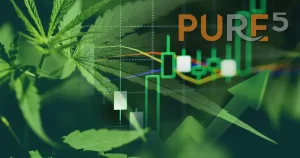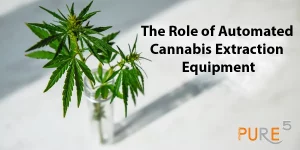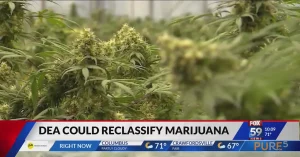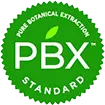What is “Nature Identical”?
Nature science identifies over 30,000 terpenes, also called essential oils in nature. The first 4-8 components are dominant in the taste or smell in every plant. Knowing the characteristics of those basic oils one can recreate every plant profile in nature. It has been a trend in the flavoring industry to synthesize those major components and recreate various plant profiles used in drinks and food.
Table of Contents
ToggleMany terpenes, also called essential oils, once obtained from flowers such as rose, berries, citrus, tropicals, lilac, etc. are nowadays produced almost entirely synthetically. These chemically produced products are referred to as “Nature Identical” in the pharmaceutical sector.. The perfumery and flavoring industries require consistency in their products while the naturally occurring substances are always subject to change as a result of seasonal conditions. The so-called “Nature identical” products and the naturally occurring essential oils are much different in their relative costs. The synthetic types are much cheaper to produce than the genuine natural ones and that is why using “Nature Identical” substitutes is widely adopted. Although their natural and therapeutic effects are compromised.
Many aromatic oils, such as jasmine, lavender or geranium, contain a relatively small number of major constituents. To reconstruct such a complex combination of components including all the trace elements would be virtually impossible. Most “Nature Identical” oils are said to be only about 90 percent accurate. The remaining 10 per cent are composed of trace elements that do not really define that particular flavor. It has been very popular in the terpene industry to mix and match isolated terpenes. Since the isolation of individual terpenes is a costly and very precise process, almost always “Nature identical” isolated terpenes have been used.
The medicinal effect of the natural essential oil is due to the unique combination of ingredients, their natural appearance and the trace elements. And this is because the trace elements have a synergistic and controlling influence on the main ones, they complete the bouquet of essence. For example, rose has approximately 300 distinct constituents, some of which have yet to be discovered, which is why synthetic rose oil is unconvincing compared to the natural one. “Nature identical” oils cannot be used therapeutically for the naturally occurring aromatic materials, not only because constituents are lost, but they also lack the vital life force of oils of natural origin.
Since there is not a really good extraction tech that can extract and isolate natural cannabis terpenes the use of “Nature identical” terpenes in the cannabis industry became a trend. The main 6 terpenes that define the cannabis strains are Myrcene, Caryophyllene, Pinene Bsabolol, Humulene, Limonene and Linalool. Combining those in different proportions one can recreate most of the popular strains in cannabis and maintain consistency. We have seen a lot of terpene companies start offering those isolated “Nature identical” products.
What regulations are being imposed?
Recently California accepted new regulations for Cannabis Packaging, Labeling and Advertising which posed new restrictions on how new products hit the market. Current cannabis regulations AB 1207 prohibit packaging, labeling, and advertising that is “attractive to children”. This new bill codifies into California law what is “attractive to children” and adds additional prohibitions and requirements.
This bill would also make changes to what is allowable related smoking or vaping cannabis products by specifically prohibiting “cannabis or cannabis products intended for use by inhalation or combustion form containing any natural or “Nature identical” synthetic flavors or descriptors of flavors”. This wording is concerning because it means that natural terpenes found in cannabis could not be added back to distillate if it is removed during the extraction process. It also means that even if one of the following aromas or flavors is naturally occurring in the cannabis, those aromas or flavors could not be used to describe a cannabis product: “menthol, mint, mango, strawberry, grape, orange, clove, cinnamon, pineapple, vanilla, coconut, licorice, cocoa, chocolate, cherry, coffee, popcorn, and bubblegum.” For example, even if the cannabis has natural flavors of “pineapple,” the word “pineapple” would not be allowed to be used on the packaging, labeling, or any advertising.
Another bill in California accepting new regulations for Industrial Hemp and Intoxicating Hemp AB 420. This bill does two things. First, provides a framework to integrate hemp and hemp CBD products into the licensed cannabis supply chain. Second, the bill requires stricter enforcement of industrial-hemp derived cannabinoids and adds additional requirements for industrial-hemp derived products that are intoxicating.
Highlights of the bill include the following:
- Bans “Nature identical” synthetic intoxicating cannabinoids.
- Requires out-of-state hemp manufacturers to register with the CDPH prior to manufacturing and selling industrial-hemp products in California.
- Prohibits industrial-hemp product sales in California until the CDPH develops regulations.
- Requires industrial-hemp derived products to meet product standards like maximum THC content, serving sizes, batch testing, and other important restrictions similar to those imposed on the cannabis industry.
- Requires the CDPH to develop educational materials for retailers regarding what “hemp” products they are legally allowed to sell.
What is Natural?
As we noted above there are over 30,000 terpenes known to botanical science. Their fundamental terpene structure follows a general methylbutane structure, commonly known as isoprene unit (C5)n, which forms the carbon skeleton of terpenes. That is why the terpenes are also denoted as isoprenoids. Terpenes occur in nature primarily as hydrocarbons, alcohols and their glycosides, ethers, aldehydes, ketones, esters, and carboxylic acids.
About 70 among more than 400 constituents of the Cannabis Sativa and Indica belong to the cannabinoids. These are constructed as benzene rings derived from the monoterpene olivetol and phenol with terpene isoprene tail. Cannabis preparations were once lawful in the United States for the therapeutic treatment of several diseases such as asthma, constipation, epilepsy, hysteria, insomnia, and rheumatism.
Cannabinoids are known as oleoresins formed by an alkaloid head and a terpene tail which makes them an oil soluble compound rather than water/alcohol soluble alkaloids. With that said a proper solvent has to be utilized to extract those compounds in conjunction with the non polar terpenoids discussed previously. Best extraction for those would be performed at room temperature not altering their natural state utilizing non polar solvent inert to water and resins to preserve their natural state.
What is Aerosol Extraction?
PURE5TM Extraction is introducing the state of art unique process of Pure Botanical Extraction (PBXTM) that creates pure terpene rich oils called Hash ResinTM. The so-called Hash ResinTM is rich in terpenes and cannabinoids extracted in natural state. The extracts maintain a high strain specific terpene profile native to the original strain. Terpenes are extracted utilizing a gentle and non-destructive botanical extraction process that concentrates them and if needed suspends them in other natural oils from plants.
High terpene hemp or cannabis flowers are selected for the experiment and subsequently coupled with the Pure Botanical Extraction (PBXTM) process to deliver the highest terpene concentrations. The extraction procedure may be tailored to extract dominantly terpenes while suppressing other cannabinoids such as THC or CBD. When the cannabis strains are cultivated in a unique way to increase the whole spectrum of terpenes in the flower, the extraction is selectively isolating the main and the minor terpenes characteristic to the blooms. The extraction process employs a low-pressure, room-temperature, non-polar aerosol R134a allowing to capture every potential terpene along with flavonoids and ketones which results in explosion of flavor and scents.
Myrcene, caryophyllene, humulene, pinene, and linalool are more occurring in hemp flowers, that is why extracting even the trace amounts present in the Lifter strain makes this a more complex floral profile with greater entourage effects. Lifter strain does exactly what the name says … it lifts you up! Trans-ocimene (parsley, basil, mint and mango), terpinolene (nutmeg, lilacs and pine), and limonene (citrus, fruits, and juniper) are among the terpenes identified in the plant profile. the typical hemp plant terpene profiles.
Below is a comparison between the terpene profile of the original Lifter strain flower and the terpene profile sequentially extracted Live Resin and Full Spectrum Oil with aerosol R134a with PBXTM process. The products extracted this way are commonly called Hash ResinTM. The Lifter flower has been extracted for Live Resin (LR) and for Full Spectrum Oil (FSO). In the first case the terpenes are over 33% and the second, other over 5% while the cannabinoids repeat their original ratios.
Original Lifter Flower Terpene Profile
Lifter Life Resin with preserved Terpene Profile
Lifter Full Spectrum Oil with Terpene Profile Preserved
The Live Resin extracted terpene profile repeats the exact flower terpene profile in approximately 30 times more concentrated form and the full spectrum oil is 4 times more concentrated due the higher cannabinoid presence at around 80-85%.The additional two terpenes discovered in the extract were below the detection threshold in the flower and are detected in the extract after being concentrated by the extraction process. Because the extraction is performed at room temperature, no existing terpenes are destroyed and no new by-products are created.
The terpene oils or particularly the Live Resin can be added to all cannabis products as, for example distillate, isolate or crude extracted with other means that lack the original terpene profile and enhance flavor and ensemble effects. Every extract comes with a chain of custody that traces back to the original cultivar. Furthermore, all extracts are tested for cannabinoids, terpenes, residual solvents, inhalable microbiological contamination, and pesticides by a third party.
Most concentrated botanically sourced terpenes at the market are often extracted with steam which pulls a limited spectrum of terpenes or suspended in alcohol or triglyceride oils at lower concentration. The PBXTM process delivers 100% natural components from the flower and does not create by-products that other widely used elsewhere rosin heat, or solvents like CO2 and ethanol will create due to their aggressive oxidative nature.
As explained above, due the aggressive nature of some polar solvents during extraction and access to oxygen they oxidize some of the active components leading to unwanted bi-products. That oxidation changes the natural PH of the extract and limits the antioxidant activities of the extracts produced which lowers their medicinal and therapeutic values. A naturality of a botanical product’s medical value is directly tied to its capacity of the extract to suppress free radicals in the body, which characterizes its natural antioxidant activity.
Who is PURE5TM?
At PURE5TM Extraction, we design and manufacture solventless extraction and distillation systems. Our objective is to create a safe and non-nontoxic and non-combustible environment for processing and allow anyone to process with consistency and without any chemistry knowledge. Our systems provide high-quality output, speed, and economics for the entire process. The aerosol extracts are obtained at ambient temperature without degradation preserving the full oil vitality. The results are way better than any other extraction adopted for this market since none of those extracts the complete target active compounds.
We have 25 years of background in botanical extraction and we started PURE5TM brand in 2015 with the objective to provide simple and easy to use machines to the cannabis market. We helped many cannabis companies to create outstanding vape and infused products. They also saved money and time when it comes to bringing products to market! This method, alone or in conjunction with ethanol, has been utilized to extract over 150 plants. Over several decades, the consistency and economics of the method have been demonstrated. Based on that vast experience, PURE5TM developed equipment differentiated by processing capacity.
—
George Stantchev, PhD
PURE5TM Extraction











